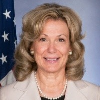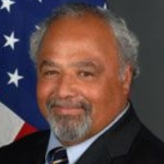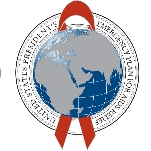The President’s Emergency Plan for Aids Relief (PEPFAR) is a pledge of $15 billion over five years (2003-2008) to fight the global HIV/AIDS pandemic. The legislation that authorized PEPFAR also established the State Department Office of the U.S. Global Aids Coordinator (OGAC), which oversees all international AIDS funding and programming. The Department of State and OGAC - along with the U.S. Agency for International Development (USAID), the Departments of Defense, Commerce, Labor, and Health and Human Services, and the Peace Corps - are responsible for administering PEPFAR. Through three strategic program areas (prevention, care and treatment), the initiative was intended to prevent 7 million new infections, treat 2 million people living with AID-related illnesses, and provide care and support for 10 million persons affected by AIDS. In its first two years, PEPFAR reportedly provided support for 471,000 people in 114 countries. Most of these were in 15 “focus countries,” - a list that currently includes Botswana, Cote d'Ivoire, Ethiopia, Guyana, Haiti, Kenya, Mozambique, Namibia, Nigeria, Rwanda, South Africa, Tanzania, Uganda, Vietnam and Zambia.
PEPFAR Important Dates and Information (PEPFAR Watch)
U.S. Agency for International Development (USAID)
Department of Defense (DoD)
Department of Commerce (DoC)
Department of Labor (DoL)
Department of Health and Human Services (HHS)
Peace Corps
The Power of Partnerships: Fourth Annual Report to Congress on PEPFAR
(Avert)
Global HIV/AIDS: A More Country-Based Approach Could Improve Allocation of PEPFAR Funding
(GAO Report) (PDF)
PEPFAR ‘Compromise’ Abandons Successful Approaches to International AIDS Relief
(by Daniel P Moloney, Heritage Foundation)
Overseas Private Investment Corporation Bio
- Table of Contents
- Overview
- History
- What it Does
- Where Does the Money Go
- Controversies
- Suggested Reforms
- Comments
- Leave a comment

Deborah L. Birx, who started studying the HIV virus in the early 1980s, was confirmed on April 4, 2014, to be head of the President’s Emergency Plan For AIDS Relief (PEPFAR) and an ambassador-at-large.
Birx comes from a scientifically-oriented family. Her father, Donald, was a mathematician and electrical engineer and her mother, Adele, was a nursing instructor. One brother was a mathematician and the other a nuclear physicist. Birx earned her B.S. in chemistry at New York state’s Houghton College in 1976 and went on to Penn State’s Hershey School of Medicine, earning her M.D. in 1980. She also went into the Army at that time and did her residency at Walter Reed Army Medical Center.
Birx’s specialty was immunology, concentrating on allergies at first. She found herself as a victim of an allergy in the 1980s when she ate kiwi fruit on an airplane and had an anaphylactic reaction severe enough that the plane had to land to get her emergency treatment. Ironically, Birx was on her way to a convention of allergists when the incident occurred.
But in the early 1980s while participating in a fellowship sponsored by Walter Reed and the National Institutes of Health, Birx began to be consulted on patients with what became known as HIV. Her early knowledge of the disease may have saved her life. While giving birth to her eldest daughter in 1983, Birx had complications, but told her husband not to let the doctors give her blood. They didn’t, and the blood that Birx would have received was later found to contain HIV.
Thus, she began a long career of searching for a cure for that disease. From 1985 to 1989, Birx was assistant chief of hospital immunology services at Walter Reed. She moved to the Department of Retroviral Research, first as assistant and in 1994 as head of the department. Beginning 1n 1996, as director of the U.S. Military HIV Research Program, Birx helped lead the RV144 vaccine trial, which took place in Thailand between 2003 and 2006, considered to be the first vaccine trial that showed a lowering of the HIV infection rate.
Birx has spent much of her career working in Africa, beginning in 1998 to set up trials there. In 2005, Birx moved to the Centers for Disease Control and Prevention as director of its Division of Global HIV/AIDS in the Center for Global Health. She held that post until being appointed to lead PEPFAR. She retired from the Army in 2008 as a colonel.
Birx has two adult daughters, Devynn Birx-Raybuck and Danielle Birx-Raybuck.
-Steve Straehley
To Learn More
Six Prominent Women Scientists Making a Difference in the AIDS Fight (by Mary Rushton, IAVI Report)

A pioneer in the fight against AIDS, Eric P. Goosby has, since June 23, 2009, overseen the President’s Emergency Plan for AIDS Relief (PEPFAR) as part of his role as U.S. Global AIDS Coordinator, leading all of the federal government’s international HIV/AIDS efforts.
- Latest News
- D.C. Public Schools will Teach all Second-Graders to Ride a Bike
- New Rule in Germany Limits Sales of Sex-Themed E-Books to 10pm to 6am
- What Happened to the 6-Year-Old Tibetan Boy the Chinese Government Kidnapped 20 Years Ago?
- U.S. Ambassador to Turkey Photoshops his Hair Color to Mock Turkish Mayor
- Mystery Artist Calls Attention to Unfixed Potholes by Drawing Penises around Them
The President’s Emergency Plan for Aids Relief (PEPFAR) is a pledge of $15 billion over five years (2003-2008) to fight the global HIV/AIDS pandemic. The legislation that authorized PEPFAR also established the State Department Office of the U.S. Global Aids Coordinator (OGAC), which oversees all international AIDS funding and programming. The Department of State and OGAC - along with the U.S. Agency for International Development (USAID), the Departments of Defense, Commerce, Labor, and Health and Human Services, and the Peace Corps - are responsible for administering PEPFAR. Through three strategic program areas (prevention, care and treatment), the initiative was intended to prevent 7 million new infections, treat 2 million people living with AID-related illnesses, and provide care and support for 10 million persons affected by AIDS. In its first two years, PEPFAR reportedly provided support for 471,000 people in 114 countries. Most of these were in 15 “focus countries,” - a list that currently includes Botswana, Cote d'Ivoire, Ethiopia, Guyana, Haiti, Kenya, Mozambique, Namibia, Nigeria, Rwanda, South Africa, Tanzania, Uganda, Vietnam and Zambia.
PEPFAR Important Dates and Information (PEPFAR Watch)
U.S. Agency for International Development (USAID)
Department of Defense (DoD)
Department of Commerce (DoC)
Department of Labor (DoL)
Department of Health and Human Services (HHS)
Peace Corps
The Power of Partnerships: Fourth Annual Report to Congress on PEPFAR
(Avert)
Global HIV/AIDS: A More Country-Based Approach Could Improve Allocation of PEPFAR Funding
(GAO Report) (PDF)
PEPFAR ‘Compromise’ Abandons Successful Approaches to International AIDS Relief
(by Daniel P Moloney, Heritage Foundation)
Overseas Private Investment Corporation Bio
Comments

Deborah L. Birx, who started studying the HIV virus in the early 1980s, was confirmed on April 4, 2014, to be head of the President’s Emergency Plan For AIDS Relief (PEPFAR) and an ambassador-at-large.
Birx comes from a scientifically-oriented family. Her father, Donald, was a mathematician and electrical engineer and her mother, Adele, was a nursing instructor. One brother was a mathematician and the other a nuclear physicist. Birx earned her B.S. in chemistry at New York state’s Houghton College in 1976 and went on to Penn State’s Hershey School of Medicine, earning her M.D. in 1980. She also went into the Army at that time and did her residency at Walter Reed Army Medical Center.
Birx’s specialty was immunology, concentrating on allergies at first. She found herself as a victim of an allergy in the 1980s when she ate kiwi fruit on an airplane and had an anaphylactic reaction severe enough that the plane had to land to get her emergency treatment. Ironically, Birx was on her way to a convention of allergists when the incident occurred.
But in the early 1980s while participating in a fellowship sponsored by Walter Reed and the National Institutes of Health, Birx began to be consulted on patients with what became known as HIV. Her early knowledge of the disease may have saved her life. While giving birth to her eldest daughter in 1983, Birx had complications, but told her husband not to let the doctors give her blood. They didn’t, and the blood that Birx would have received was later found to contain HIV.
Thus, she began a long career of searching for a cure for that disease. From 1985 to 1989, Birx was assistant chief of hospital immunology services at Walter Reed. She moved to the Department of Retroviral Research, first as assistant and in 1994 as head of the department. Beginning 1n 1996, as director of the U.S. Military HIV Research Program, Birx helped lead the RV144 vaccine trial, which took place in Thailand between 2003 and 2006, considered to be the first vaccine trial that showed a lowering of the HIV infection rate.
Birx has spent much of her career working in Africa, beginning in 1998 to set up trials there. In 2005, Birx moved to the Centers for Disease Control and Prevention as director of its Division of Global HIV/AIDS in the Center for Global Health. She held that post until being appointed to lead PEPFAR. She retired from the Army in 2008 as a colonel.
Birx has two adult daughters, Devynn Birx-Raybuck and Danielle Birx-Raybuck.
-Steve Straehley
To Learn More
Six Prominent Women Scientists Making a Difference in the AIDS Fight (by Mary Rushton, IAVI Report)

A pioneer in the fight against AIDS, Eric P. Goosby has, since June 23, 2009, overseen the President’s Emergency Plan for AIDS Relief (PEPFAR) as part of his role as U.S. Global AIDS Coordinator, leading all of the federal government’s international HIV/AIDS efforts.
- Latest News
- D.C. Public Schools will Teach all Second-Graders to Ride a Bike
- New Rule in Germany Limits Sales of Sex-Themed E-Books to 10pm to 6am
- What Happened to the 6-Year-Old Tibetan Boy the Chinese Government Kidnapped 20 Years Ago?
- U.S. Ambassador to Turkey Photoshops his Hair Color to Mock Turkish Mayor
- Mystery Artist Calls Attention to Unfixed Potholes by Drawing Penises around Them






Comments